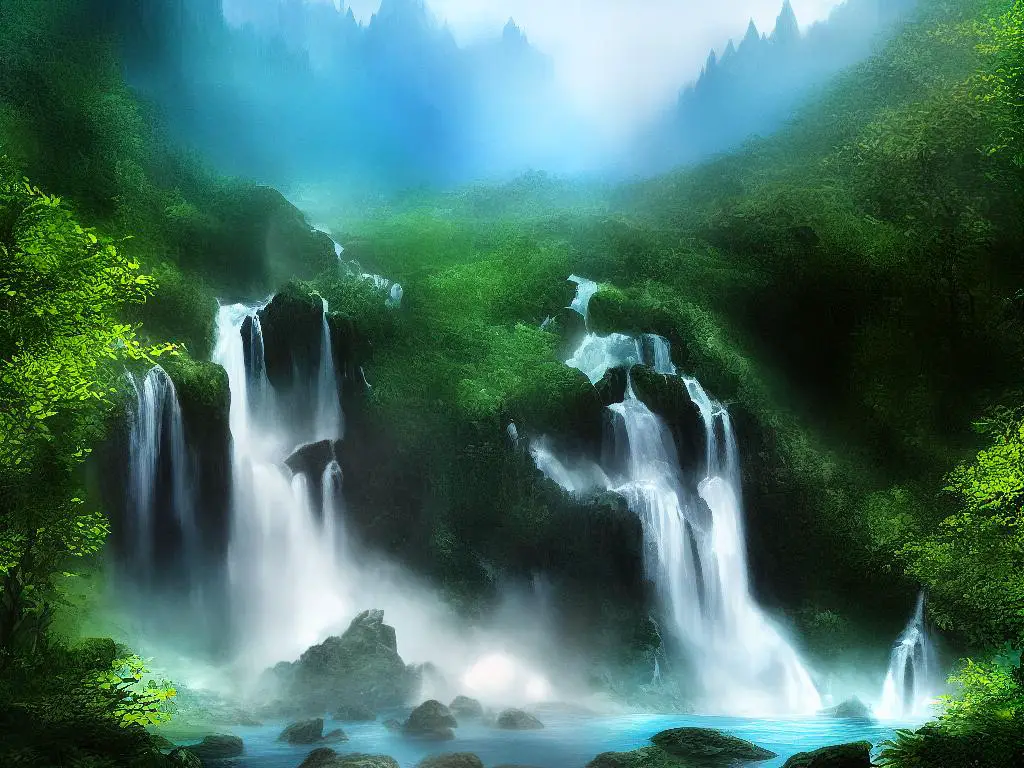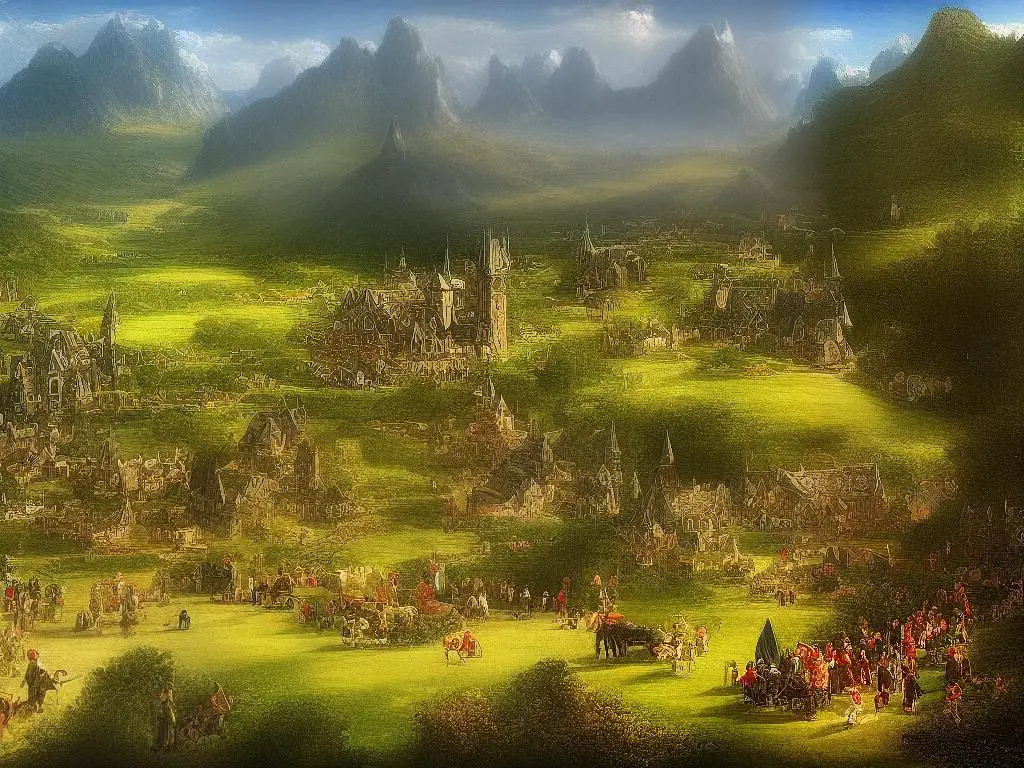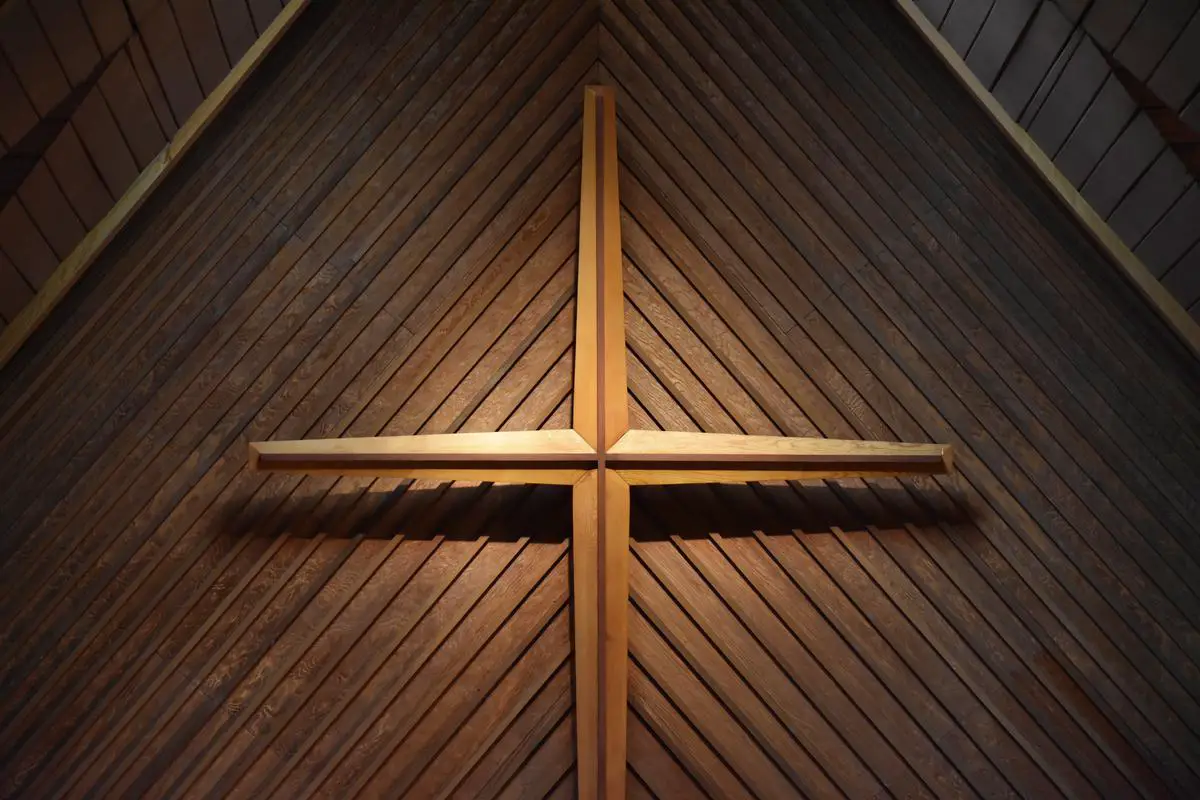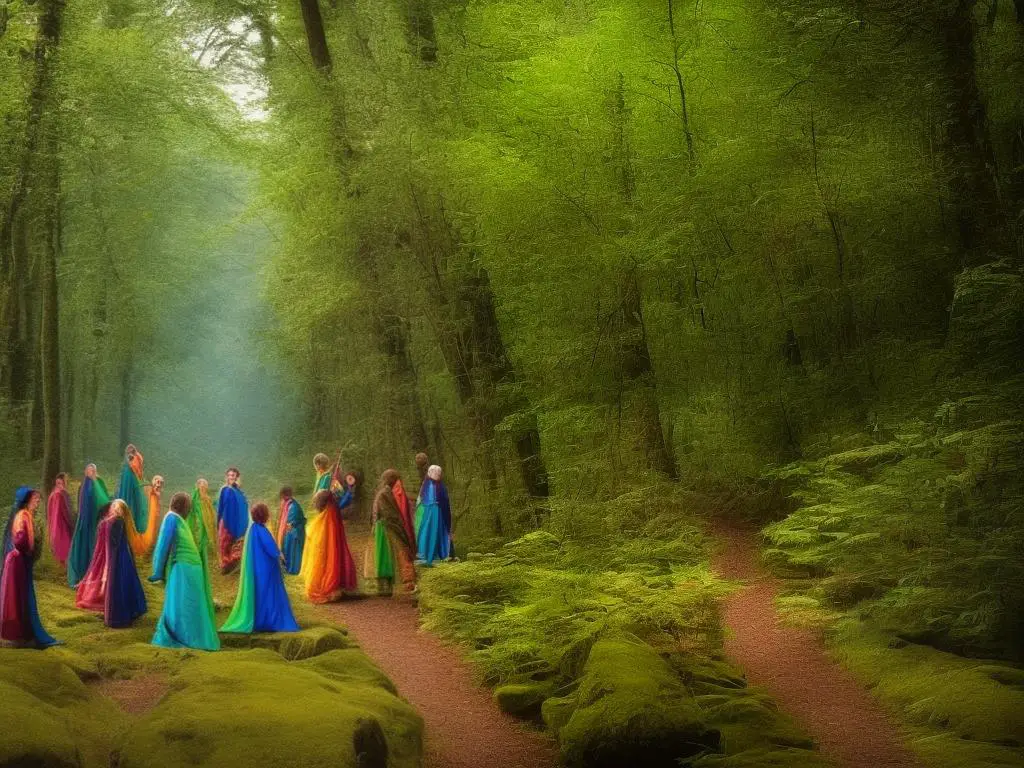The allure of the enigmatic and ethereal elven kingdom has captured the imaginations of countless generations. Revered for their otherworldly beauty, wisdom, and mystical abilities, elves have established a prominent place within the rich tapestry of folklore and fantasy. This exploration into the heart of the elven kingdom dream delves into the mythology and legends, society and culture, geography and magical territories, elven characters and archetypes, and the influence of elven lore on literature and pop culture, painting a vivid portrait of the timeless enchantment surrounding these magical beings.
Mythology and Legends
Creation of the Elves and their Kingdom
In the mythology of the elven kingdom, the creation of the elves is attributed to the divine beings, known as the Eldar. These god-like beings crafted a vision of a magical and otherworldly realm, where their new creation would reside, and infused it with their own essence. The elves were created in the image of their divine creators, possessing great wisdom, grace, and immortality. With the guidance of the Eldar, the elves established their kingdom and named it the Elven Kingdom Dream.
The First Elven Age and the Rise of the Magical Forests
During the First Elven Age, the Elven Kingdom Dream was a place of ethereal beauty and rich diversity. To ensure the new realm’s prosperity, the Eldar bestowed upon the elves various magical abilities, such as wielding elemental magic, shape-shifting, and enchantment. As the elves developed and honed their magical skills, they began to cultivate and mold the natural landscape. With their newfound abilities, they created a vast and majestic network of enchanted forests, where magical flora and fauna thrived.
The Second Elven Age and the Great Wars
The Second Elven Age marked a period of turmoil and conflict in the myths of the elven kingdom. Intruders from other realms began to invade the Elven Kingdom Dream, threatening its peace and serenity. This began a series of magical and epic battles, where the elves defended their home using their unparalleled magical prowess. The Eldar also intervened in aiding the elves, providing them with powerful weapons and guidance.
As the wars progressed, the elven race began to grow and evolve. Subgroups and divisions within the elves emerged, each with their own distinct magical abilities. These included the High Elves, who were the most powerful magic users, the Wood Elves, who had a deep connection with nature and the enchanted forests, the Moon Elves, who wielded magic associated with the celestial bodies, and the Dark Elves, who favored shadowy and necromantic magic.
Legendary Elven Heroes
There are numerous elven heroes and heroines found within the tales of the Elven Kingdom Dream. Some of these figures include:
- Elandril, the Archer: Renowned for his exceptional marksmanship and agility, Elandril played a crucial role in the Great Wars, felling countless enemies and earning him praise among his kin.
- Kaelindra, the Enchantress: She was instrumental in forging alliances with other races and enchanting the magical forests, ensuring their ongoing protection from outsiders.
- Lucian Nightshadow, the Rogue: A skilled and cunning thief, Lucian was infamous for infiltrating enemy territories and gathering valuable information to aid the elven cause in the Great Wars.
The Pact of Dreams and the Modern Elven Kingdom
In the aftermath of wars that once threatened the unity of the elven realm, the various subgroups of elves came together to establish the Pact of Dreams. This agreement united the elves, reinforcing their allegiance to the Elven Kingdom Dream and reestablishing harmony within the kingdom, thereby protecting them from future conflict.
In contemporary mythology, the Elven Kingdom Dream is a serene sanctuary of arcane wisdom, with its inhabitants maintaining a profound connection to nature that strengthens as the years pass. Today, the elves forge alliances not only with each other but also with races such as humans, dwarves, and fairies. The spellbinding beauty of the elven world and the enchanting tales of its citizens continue to captivate those who seek the ancient, magical wisdom of the elves.

Elven Society and Culture
Social Structure
The society within the elven realm is notable for its complexity and intricacy. Elves often gather into vast, extended families known as clans, which are interwoven through marriage and various agreements. Collectively, these clans give shape to the overarching elven kingdom. Governance rests in the hands of a monarch—usually holding the title of king or queen—who is selected based on their noble bloodline or exemplary achievements.
Elven society is further delineated by several distinct classes: noble elves, scholars, artists, craftsmen, and warriors. While the nobles wield considerable political power and lay claim to extensive lands, power and respect can also be earned through exceptional skill in the arts, craftsmanship, or combat. This meritocratic aspect of their society creates opportunities for gifted individuals to rise in prominence, regardless of their original social standing or noble heritage.
Given their profound connection to nature, it is unsurprising that many elves choose careers focused on preserving and safeguarding their environment. The role of rangers and druids is commonplace within their society, working in tandem to uphold the delicate balance between elf and nature.
Language
The elven language, often referred to as “Elvish,” is rich, melodious, and fluid. It is a beautiful language filled with nuance that reflects the eloquence and artistry of the elves themselves. Elvish often incorporates various symbols representing concepts such as love, honor, or wisdom. Their writing system, known as “Tengwar,” is a flowing script that uses a combination of consonants, vowels, and diacritics.
Elvish dialects can vary by region and may even reflect the cultural differences between various elven subraces, such as high elves, wood elves, and dark elves.
Arts and Culture
Art plays a significant role in elven society and culture, with elves often devoting centuries to perfecting their craft. Their art encompasses numerous forms, including sculpting, painting, dance, music, and poetry, all of which are revered by the elven people. The natural world heavily influences much of elven art, highlighting the interconnectedness between elves and nature.
Elven music is often ethereal and enchanting, played on instruments like lyres, flutes, and harps. Elves believe that their songs carry a magical power that can heal both the mind and spirit. Dance, on the other hand, is graceful and fluid, reflecting the elegance of the elf’s slender frame and movements.
Their architecture has a distinct aesthetic that blends seamlessly with nature, often incorporating living trees and other natural elements. Elves’ homes are built within the forest using light and airy materials, creating a harmonious and tranquil living space.
Traditions, Customs, and Values
Elves have a deep spiritual connection to nature and the world around them. They are known for their sensitivity, intelligence, and wisdom, making them cherished diplomats and advisors. An elf’s long lifespan allows them to develop unique perspectives and values, often emphasizing harmony, patience, and respect for all living things.
Rites of passage are essential in elven culture and often involve elaborate ceremonies marking milestones such as coming of age, marriage, or ascension to the throne. For example, an elven wedding ceremony is a grand celebration that honors the bond between two individuals and their families, symbolizing unity and love.
Elves have great respect for tradition and history, often preserving tales and stories from their ancient past. Ancestors are revered, and their stories are passed down through generations in the form of songs, poetry, or storytelling. This emphasis on history and tradition allows the elven people to maintain a strong sense of identity and pride in their rich heritage.
Elven society places a high value on learning and education, with the belief that knowledge is power. Elves spend significant time cultivating their intellectual and creative abilities, resulting in a culture infused with the arts, philosophy, and a deep understanding of magic.
Introduction
The elven kingdom dream represents a vision of an idyllic and harmonious society, in which its members live in perfect balance with the world that surrounds them. Elves are known for their highly structured society, intricate language, and a deep respect for art, customs, and values. The elven race’s beauty, wisdom, and resilience can be witnessed across various realms and continue to have a strong influence on the diverse cultures of different civilizations. In this article, we will take a closer look at the geography and lifestyle of the elven kingdom and explore how their society and culture contribute to their thriving presence.

Geography and Magical Territories
Geography of the Elven Kingdom
The Elven Kingdom is a magical realm situated within an enchanted forest, filled with life and supernatural energy. Bounded by mountains to the north and coastlines to the south, this realm is characterized by its lush landscapes, deep forests, and thriving ecosystems. The elves, possessing an inherent connection to nature and magic, have established their various settlements throughout the kingdom. These settlements, designed to blend seamlessly with the environment, range from elaborate tree cities to small, hidden communities, all sharing a serene atmosphere where the elves and their magical counterparts coexist peacefully.
Magical Territories
Within the borders of the Elven Kingdom lie several magically enhanced territories that serve various purposes for the elven civilization. These territories are known as the enchanted forests, the network of hidden cities, and the mystic sanctuaries.
Enchanted Forests
The enchanted forests are the lifeblood of the Elven Kingdom, serving as vast, natural barriers and providing valuable resources to the elves. The magical energies that flow through these enchanted forests constantly renew the plant and animal life on the forest floor, ensuring the longevity of the elven civilization. These forests also house many of the mythical creatures that the elves have formed symbiotic relationships with, such as unicorns, treants, and various elemental spirits. Elves can communicate and form bonds with these creatures, further reinforcing their connection to the natural world around them.
Hidden Cities
Throughout the Elven Kingdom, there are a number of hidden cities where elves have built their communities. These cities are carefully concealed within the depths of the enchanted forests, remaining unseen by outsiders. Many of these cities are built within the mighty trees themselves, with the elves using their magical abilities and architectural skills to magically shape the trees in a way that can support infrastructure without harming the trees themselves.
Each hidden city is uniquely designed, reflecting its surrounding environment and the particular elven community that inhabits it. Some of these cities have elaborate networks of interconnected tree homes, while others are more spartan with only a handful of hidden dwellings. Regardless of the size and design, all of the hidden cities are nestled in harmony with nature, respecting the balance of the ecosystems in which they exist.
Mystic Sanctuaries
Apart from the enchanted forests and hidden cities, there are isolated sanctuaries scattered across the Elven Kingdom. These sanctuaries serve as places of solace, meditation, and spiritual rejuvenation for the elves. They may be located near areas with high concentrations of magical energy or near ancient, mystical landmarks.
Within these mystic sanctuaries, elves practice various forms of magic, enhance their abilities, and gain a deeper understanding of the natural and supernatural world around them. Time within these sanctuaries often seems to flow differently, allowing the elves to hone their skills and abilities far beyond the perception of the outside world.
The Relationship between Elves and their Environment in Magical Dreamlike Kingdoms
Elven Kingdoms featured in fantasy literature showcase a remarkable connection between elves and their environment, which is best described as a fusion of beauty, magic, and mystery. Elves possess innate magical abilities that enable them to seamlessly manipulate and enhance their surroundings, resulting in the creation and sustenance of various territories and settlements within their mystical realms. The harmonious relationship between elves and nature plays an integral role in their customs, spirituality, and day-to-day lives.
Enchanting forests, hidden cities, and mystic sanctuaries unite to form an ethereal Elven Kingdom, where Elves and their environment work together to uphold their society. The enchanting magical world provides nourishment and sustenance to the Elf community, who in return nurture and protect the environment with their magic. This symbiosis exemplifies the true meaning of living in harmony with nature, allowing both Elves and their land to coexist and prosper.

Elven Characters and Archetypes
Elven Characters and Archetypes: Depictions in Popular Fantasy Stories
Elves often fascinate readers with their portrayal in popular fantasy works, including J.R.R. Tolkien’s Lord of the Rings trilogy, Forgotten Realms, and the Dragonlance series. These enigmatic beings are essential elements within their respective elven kingdom dream narratives, and each tale offers unique interpretations of elf characters and archetypes. The purpose of this article is to explore the diversity of elf characters and their significance within the broader context of the enchanting dreamlike kingdoms they inhabit, as portrayed by various authors and storytellers.
The Origin of Elves
Elves share a curious origin that blends folklore, mythology, and fiction. Their earliest roots can be traced back to Norse mythology, where they were revered as divine beings with immense power and magical abilities. Throughout history, elves have evolved with each retelling, adopting different aspects from various cultures and mythologies. In modern literature, elves are often portrayed as highly skilled, extremely intelligent, and visually striking beings with long, pointed ears and slim frames.
Noble High Elves
High elves often epitomize the ethereal image that many people associate with elves. As one of the oldest and most knowledgeable of the elven subraces, high elves also referred to as “gray elves” or “sun elves,” depending on the story, are known for their wisdom and mystical abilities. They typically possess an innate sense of magic, allowing them to wield spells and charms with ease. High elves often hold leadership roles in elven societies, maintaining vast kingdoms with a hierarchy emphasizing knowledge, grace, and cultural refinement.
Agile Wood Elves
Another popular subtype within the elf umbrella is the wood elf, characterized by their close affinity to nature. Wood elves are experienced in living off the land, making them adept at surviving the wilderness. Their agility and strong connection to the natural world make them exceptionally skilled as hunters, rangers, and scouts. They often live in smaller, less imposing communities than their high elf counterparts, and they have a semi-nomadic lifestyle that revolves around the rhythm of the seasons and the roaming of wildlife.
Dark and Sinister Drow
The drow, or dark elves, are perhaps one of the most enigmatic and feared beings in elven stories. Often reviled by other elves, drow live in deep underground cities, disconnected from the natural world and existing in a twisted, subterranean realm. They are typically skilled in the art of deception, cruelty, stealth, and venomous magic. The drow culture is built upon a matriarchal society, where powerful female drow rule with an iron fist. While some drow characters may rise above their malicious tendencies and seek redemption, others embrace darkness, creating tension and antagonism within elven tales.
The Role of Elves in Elven Kingdom Dream Narratives
Each of the elven subraces has specific roles within their communities and the broader narrative of the elven kingdom dream. High elves may serve as wise rulers or knowledgeable scholars, contributing to the growth and stability of their people. Wood elves excel in harmonizing with nature while bringing balance and protection to the world and its inhabitants. Drow, on the other hand, often act as villains or anti-heroes, challenging societal norms and throwing a wrench into the workings of the elven kingdom dream.
The enchanting world of the elven kingdom dream is woven together by diverse elven characters, each with their own unique abilities, traits, and cultural influences. This intricate tapestry of fantastical narratives allows for an immersive storytelling experience, beloved and cherished by fans of the fantasy genre. With the careful crafting of these magical realms, readers can delve deeply into the enchantment of the elven kingdom, finding themselves captivated and inspired by its vivid portrayals, contributing to the genre’s enduring appeal for generations of both readers and creators.

Photo by frankie_bp on Unsplash
Influence of Elven Lore in Literature and Pop Culture
Elven Lore in Literature and Pop Culture
Drawing from the rich history of Germanic, Norse, and Celtic mythologies, elven lore has caused a lasting impact on literature and pop culture, capturing the imaginations of audiences for centuries. Early depictions of elves portrayed them as mysterious, divine beings with magical powers and ethereal beauty. Over time, the development of these enchanting characteristics has allowed elves to assume iconic roles in a myriad of literary works and popular culture adaptations, further enriching their cultural significance and solidifying their place in the hearts of fantasy lovers.
Adaptations and Noteworthy Works
Several adaptations of Tolkien’s works have brought elven lore to a wider audience, most notably Peter Jackson’s “The Lord of the Rings” and “The Hobbit” film trilogies. The movies have been praised for their accurate and detailed portrayal of Tolkien’s vision, showcasing elven beauty, strength, and wisdom. These movies, along with other adaptations like the popular animated series “The Dragon Prince,” have inspired countless new fans to explore the world of elves and their various incarnations in literature and pop culture.
Other popular works that have taken inspiration from elven lore include J.K. Rowling’s Harry Potter series, Christopher Paolini’s Inheritance Cycle, and Andrzej Sapkowski’s The Witcher series. Each author has created their own unique version of elves, incorporating Tolkien-influenced characteristics with new elements to create intriguing and complex storylines. The enduring presence of elves in these influential works demonstrates the timeless fascination with these mythical beings and their enduring significance in literature and pop culture.
The Elven Kingdom Dream
The elven kingdom dream captivates audiences with its enchanting allure and immersive world-building. At the core of this fascination is the yearning for a utopian society where beauty, wisdom, and harmony prevail. Elves often symbolize these ideals, representing a perfect balance of nature and culture, power and grace.
This dream has inspired artists, writers, and filmmakers to continue creating new stories and adaptations involving elven civilizations, each with their own unique twists. From lush, ethereal landscapes to deep, ancestral wisdom, these elements of the elven kingdom dream continue to stir the imagination and resonate with audiences seeking escape and inspiration.
The desire for a connection with nature and its mystique, as well as the pursuit of wisdom and harmony, reflect the fundamental human desire for self-improvement and the search for meaning. The elven kingdom dream encapsulates these aspirations, offering a symbol of hope and enlightenment that transcends cultural differences and has solidified the elves’ position as an essential element of fantasy storytelling. By exploring the countless variations of elven lore that exist within literature, movies, and pop culture, contemporary audiences can find inspiration and immerse themselves in the timeless appeal of the elven kingdom dream.

Ultimately, the elven kingdom dream serves as an enduring testament to our fascination with the mysterious and the magical. Deeply rooted in mythology and woven throughout literature, movies, and popular culture, the enchanting world of the elves has captured the hearts and minds of dreamers worldwide. By understanding the intricacies of elven society, culture, and lore, we gain a greater appreciation for the intricate tapestry of their narrative, revealing the ineffable allure of these fantastical beings that continues to inspire awe and admiration across generations.
